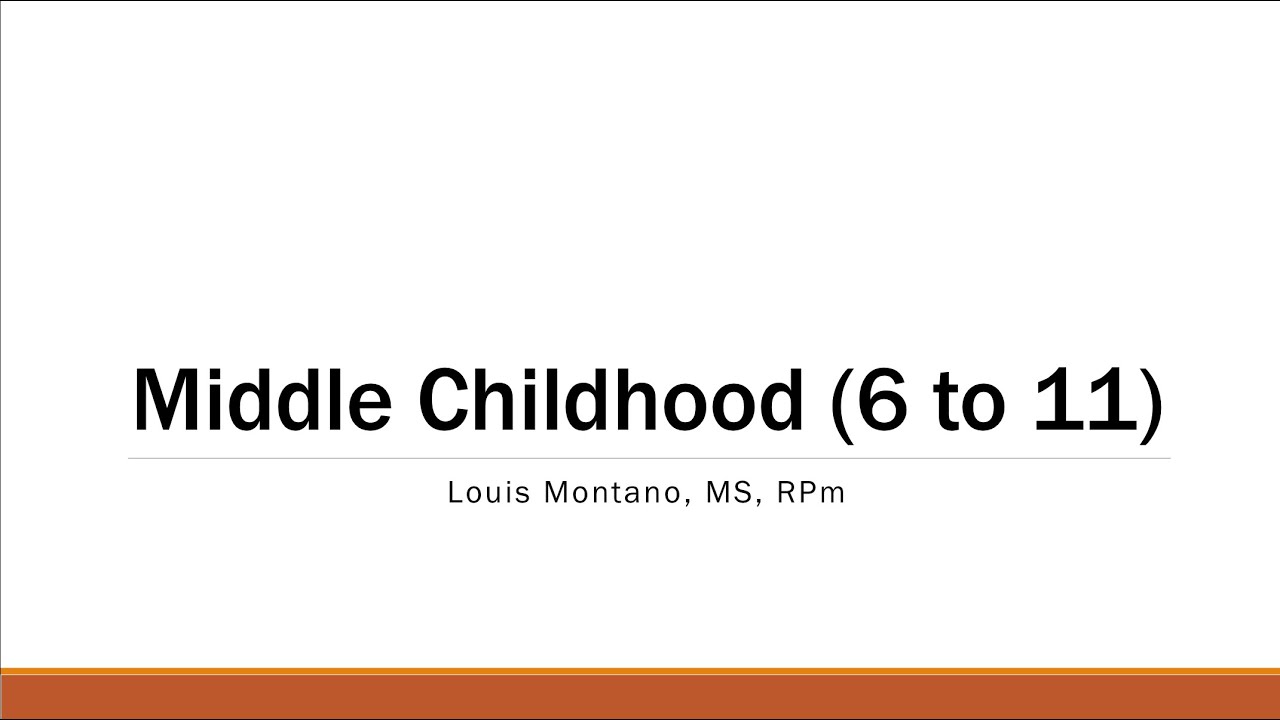Physical Development in Middle Childhood
Summary
TLDRThis video script focuses on the physical development of children during middle childhood, roughly grades 1-5. It highlights the uneven physical growth where girls often surpass boys in height. The script emphasizes the importance of myelination for cognitive development and how stress can hinder brain function and learning. It also addresses the impact of socioeconomic status on brain development and the observed gender differences in language and math aptitude. The presenter discusses the significance of brain plasticity and motor skill development, advocating for more physical activity in schools despite the challenges posed by testing pressures and socioeconomic disparities. The script concludes with a call to action for educators to consider the physical, cognitive, and social interplay in children's development.
Takeaways
- 📝 Middle childhood covers grades 1 to 5, which is a critical period for both physical and cognitive development, especially relevant for educators.
- 💁 Girls tend to develop physically earlier than boys, often growing taller and showing greater readiness for school activities.
- 💻 Brain development during middle childhood includes increased myelination, which enhances cognitive efficiency and focus.
- 👇 Stress can significantly impact a child's ability to concentrate and learn, highlighting the importance of a supportive educational environment.
- 👃 Lower socioeconomic status can affect brain development, potentially leading to less brain specialization and activity during language tasks.
- 💵 Gender differences in brain development show that girls may develop language skills more quickly, while boys may excel in math at an earlier age.
- 💂 Brain plasticity allows for remarkable adaptability, as seen in cases of individuals who have lost vision and developed echolocation skills.
- 💲 Motor development is crucial during middle childhood, with improvements in gross and fine motor skills, hand coordination, and body strength or flexibility.
- 💵 Physical activity is essential, but many children, especially those from lower socioeconomic backgrounds, lack opportunities for adequate movement and exercise.
- 💳 Schools should prioritize physical activity and movement for children, as it's linked to better cognitive function and learning, despite the pressure to focus on academic testing.
- 💰 Organized sports can foster social skills and physical health, but issues like cost and competitiveness can limit access and enjoyment for some children.
Q & A
What is the age range for middle childhood?
-Middle childhood is typically defined as grades 1 or 2 through five.
Why might girls be more ready to attend school than boys during middle childhood?
-Girls typically develop physically earlier than boys and are more able to sit longer, which can make them more ready for school.
What is myelination and why is it important for cognitive functioning?
-Myelination is the process where a fatty sheath forms around nerves, promoting efficiency and higher cognitive functioning in children.
How can stress affect a child's ability to pay attention in class?
-Stress can interfere with the brain's ability and a child's ability to concentrate and learn effectively in class.
What impact does socioeconomic status have on brain development during middle childhood?
-Children from lower socioeconomic backgrounds may lag in brain development due to fewer experiences, which are crucial for building brain architecture.
What are the gender differences in language and math abilities during middle childhood?
-Girls' brains tend to latch on to language quicker, while boys' brains tend to latch on to math quicker, although it's important to note that this doesn't mean girls can't do math or boys can't do language.
How does brain plasticity manifest in early and middle childhood?
-Brain plasticity allows children to adapt and learn new skills quickly. Examples include Daniel Kish's ability to echolocate and Cameron M's brain adapting after half of it was removed.
Why is physical movement important for children's cognitive development?
-Physical movement is crucial for cognitive development as it helps children to focus and learn better, especially young boys who often think kinesthetically.
What is the recommended amount of daily physical activity for children and how does socioeconomic status affect this?
-It is recommended that children get 60 minutes of physical activity daily. However, children from lower socioeconomic backgrounds may not get enough due to lack of access to activities or safe environments.
Why might recess be shortened in schools despite its benefits?
-Recess might be shortened due to an emphasis on testing and academic performance, with more focus placed on subjects like reading, writing, and arithmetic.
What are the potential issues with organized sports for young children?
-Organized sports can be beneficial for developing lifelong health habits and social skills, but issues can arise when parents or coaches become overly competitive, making the activity less fun and more about winning.
How can technology impact physical development in children?
-While technology has its benefits, it can lead to sedentary behavior and reduce the amount of physical activity children get, which is essential for their physical development.
Outlines

This section is available to paid users only. Please upgrade to access this part.
Upgrade NowMindmap

This section is available to paid users only. Please upgrade to access this part.
Upgrade NowKeywords

This section is available to paid users only. Please upgrade to access this part.
Upgrade NowHighlights

This section is available to paid users only. Please upgrade to access this part.
Upgrade NowTranscripts

This section is available to paid users only. Please upgrade to access this part.
Upgrade NowBrowse More Related Video

How Our Bodies Grow: Physical Development from Childhood to Adulthood. Free PDF Mind Map Download

Perkembangan Anak Usia Dini - Tahap Perkembangan Anak Usia Dini 2 6 tahun

1100 04.1 - Early Childhood - Physical Development

[DEVPSY] Middle Childhood Part 1

emosi 1 2

TARI MASSAL, 1300 Murid Tk Raudhatul Athfal Sekota Padang
5.0 / 5 (0 votes)